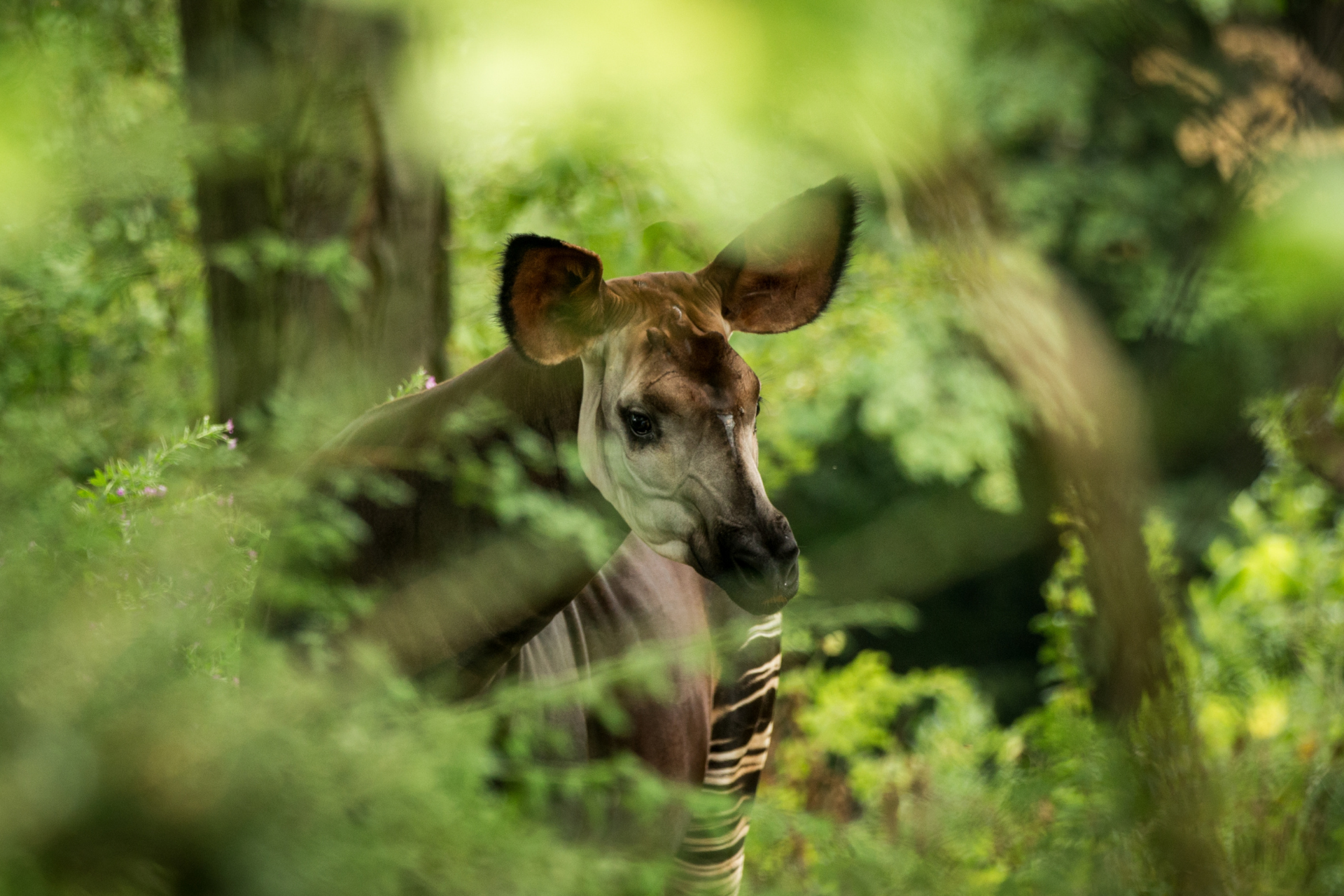
The Okapi
The okapi (Okapia johnstoni), or forest giraffe, is a shy, solitary species found only in the rainforests of the Democratic Republic of Congo (DRC). Closely related to the giraffe, the okapi has a unique coat and distinctive white stripes on its rump and legs.
Okapi are a Flagship species, playing a vital role in ecosystem health by protecting intact forest habitat for sustaining healthy okapi populations helps countless other species thrive, contributing to the rich biodiversity of the Ituri Forest. A thriving forest has a global impact, stabilizing climate patterns for people worldwide. They are also a national symbol in the DRC, featured on currency and emblems of ICCN ecoguards responsible for protecting all wildlife and plants in DRC.
Key Facts About the Okapi:
-
450-800 pounds, 4-5 feet tall
-
Herbivorous, feeding on leaves of over 100 species of plants and trees
-
Up to 30 years in the wild
-
ILowland Rainforests of Eastern DRC, vital for biodiversity and climate regulation.
-
IUCN Red List - Endangered

